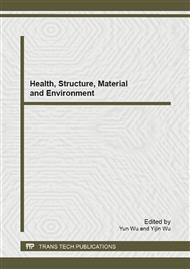p.1023
p.1029
p.1033
p.1039
p.1043
p.1049
p.1054
p.1058
p.1064
Seasonal Transport Characteristics of Suspended Particulate Organic Carbon in the Middle and Lower Yangtze River and the Relationship with Three Georges Reservoir
Abstract:
The suspended matter samples collected about 2 times every month in Datong of Yangtze River from May to November 2010 were used for determination of grain size and particulate organic carbon (POC) component. The results indicated that the size composition and organic carbon concentrations of Datong showed obvious seasonal characteristics. The median grain size of the suspended particulate matter ranged from 5.8 to 7.8Φ, decreased in summer (July to September) and increased in autumn (October to November). The POC% of the suspended particulate matter ranged from 0.87% to 1.18%, and was lower in summer, because high sediment discharge had dilution effect for organic carbon. The increase of the turbidity of water reduced the production capacity, and the organic matter correspondingly decreased. POC% decreased with the reduction of median grain size, which suggested that organic matter into the river in summer is mainly organic debris, but not mainly absorbed by the fine particles of clay. CaCO3 content ranged 3.7% to 7.6% and was higher in summer, which reflected the increased source contribution of the upper stream. It decreased in autumn, which reflected the increased source contribution of the middle and lower stream. Since the impoundment of the Three Gorges Reservoir, POC% in Datong were significantly higher than before, which showed the rise of fine particulate matter component and its stronger adsorption of organic matter. The Three Gorges Dam had significant influence on the grain size and organic composition of suspended matter of theYangtze River into the sea. Its potential environmental impact of bio-geochemical effects deserves more research attention.
Info:
Periodical:
Pages:
1058-1063
Citation:
Online since:
February 2013
Authors:
Price:
Сopyright:
© 2013 Trans Tech Publications Ltd. All Rights Reserved
Share:
Citation:


